
Rialto Bridge: A Timeless Icon of Venice
Explore the enchanting Rialto Bridge, a stunning architectural gem in Venice with breathtaking views, rich history, and vibrant atmosphere.
The Rialto Bridge stands as a magnificent symbol of Venice, beautifully arching over the Grand Canal. As one of the oldest and most iconic bridges in the city, it offers breathtaking views and a vibrant atmosphere, making it a must-visit spot for tourists. With its stunning architecture and rich history dating back to the late 16th century, the bridge is not only a functional crossing but also a beloved gathering place for both locals and visitors alike.
A brief summary to Rialto Bridge
- Sestiere San Polo, Venice, Metropolitan City of Venice, 30125, IT
Local tips
- Visit early in the morning or late in the evening to avoid crowds and enjoy a quieter experience.
- Bring your camera; the views from the bridge are especially stunning at sunset.
- Explore the nearby markets and shops for unique Venetian souvenirs.
- Enjoy a coffee or a meal at one of the nearby cafes while watching the canal activity.
Getting There
-
Walking
From Santa Croce, head towards the Grand Canal. If you are near the Santa Croce train station, exit and follow the signs toward 'Piazzale Roma.' Walk straight until you reach the Campo San Geremia. From there, cross the canal via the Ponte delle Guglie. Once across, continue straight to the intersection and turn right onto Strada Nuova. This road will lead you to the Rialto area.
-
Vaporetto (Water Bus)
If you prefer to take a Vaporetto, head to the nearest Vaporetto stop, which is likely 'Ferrovia' (near the Santa Croce train station). Purchase a ticket at the ticket booth or vending machine (a single ticket costs €7.50). Board the Vaporetto towards 'Rialto' or 'San Marco.' The journey will take approximately 10-15 minutes. Once you arrive at the 'Rialto' stop, exit and follow the signs to the Rialto Bridge, which is a short walk away.
-
Combination of Walking and Vaporetto
You can also walk to the nearest Vaporetto stop 'Ferrovia,' as described above. Instead of taking the Vaporetto directly to Rialto, you can stop at 'San Toma' and enjoy a scenic walk along the winding streets. From 'San Toma,' head towards Campo San Polo, then continue towards the 'Rialto' area. This route offers a more immersive experience of Venice's charming streets.
Discover more about Rialto Bridge
Iconic landmarks you can’t miss
Palazzo dei Dieci Savi
0.0 km
Explore the rich history and stunning architecture of Palazzo dei Dieci Savi, a must-visit tourist attraction in the heart of Venice.

Campo S. Giacomo di Rialto
0.1 km
Explore Campo S. Giacomo di Rialto, a historic square in Venice filled with charm, culture, and authentic Venetian cuisine amidst stunning architecture.

Palazzo Marcello dei Leoni
0.1 km
Explore the historical charm of Palazzo Marcello dei Leoni, a stunning landmark on Venice's Grand Canal, showcasing the city's rich architectural heritage.

Dogana da Terra
0.1 km
Explore the historic Dogana da Terra in Venice, a stunning architectural marvel that reveals the city's rich maritime heritage and vibrant cultural history.

Gondola ride at Ponte de l'Ogio
0.1 km
Discover the magic of Venice with a gondola ride at Ponte de l'Ogio, where enchanting waterways and historic architecture await your exploration.

Church of San Giovanni Elemosinario
0.1 km
Discover the tranquil beauty of the Church of San Giovanni Elemosinario, a hidden gem in Venice's vibrant cultural landscape, rich in art and history.
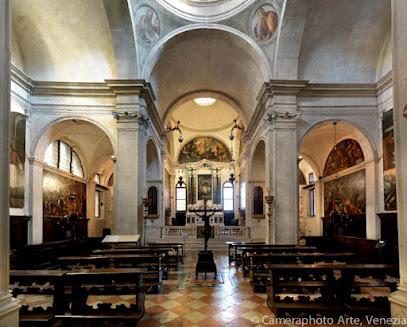
Venice Walking Tour - Another Venice
0.2 km
Explore Venice's hidden gems and iconic sites with a unique walking tour experience that captures the essence of this enchanting city.
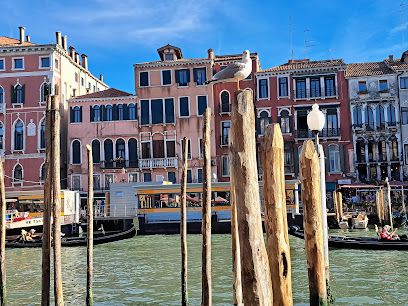
Campo S.S. Apostoli
0.3 km
Experience the serene beauty and historic charm of Campo S.S. Apostoli, a hidden gem in the heart of Venice, where art and culture blend seamlessly.

Parish Church of the Holy Apostles
0.3 km
Explore the tranquil beauty of the Parish Church of the Holy Apostles in Venice, a serene retreat filled with stunning art and rich history.

Ai Boteri
0.3 km
Affordable hostel in the heart of Venice, offering comfortable accommodations and easy access to historic landmarks and charming canals.

Church of Saint Mary of Miracles
0.3 km
Explore the Church of Saint Mary of Miracles, a serene haven of Renaissance architecture in the heart of Venice's enchanting canals.

Calle del Perdon
0.3 km
Discover the enchanting Calle del Perdon in Venice, a serene alleyway steeped in history and culture, perfect for an authentic Venetian experience.
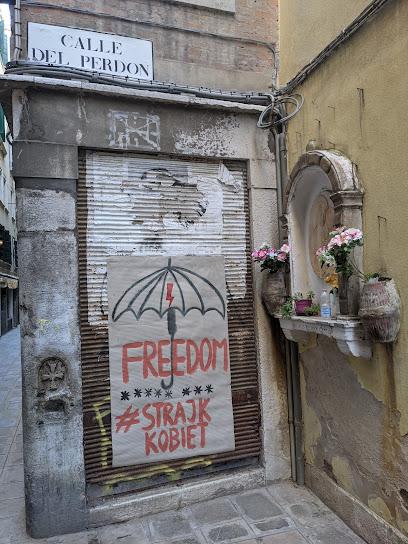
Calle del Perdon - Knights Templar Cross
0.3 km
Explore the historical significance of the Knights Templar Cross at Calle del Perdon, a hidden gem in Venice that reveals the city's rich past.

Arco del Paradiso
0.3 km
Discover the breathtaking Arco del Paradiso in Venice, a captivating sculpture that embodies the city's rich artistic heritage and history.
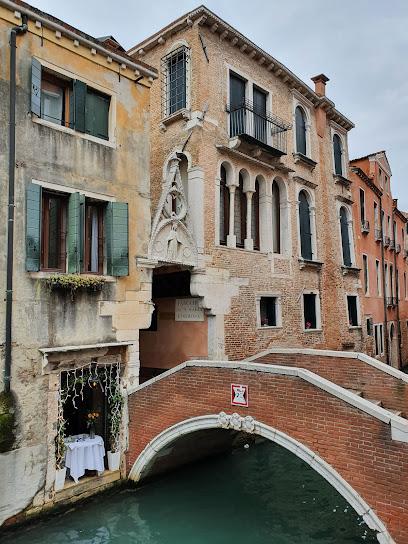
Grand Canal
0.3 km
Discover the enchanting Grand Canal, Venice's main waterway, lined with historic architecture and a vibrant cultural atmosphere, perfect for any traveler.

Unmissable attractions to see
Rialto Bridge
0.0 km
Explore the enchanting Rialto Bridge, a stunning architectural gem in Venice with breathtaking views, rich history, and vibrant atmosphere.

Palazzo dei Camerlenghi
0.0 km
Explore Palazzo dei Camerlenghi: A Historical Landmark in Venice Showcasing Architectural Splendor and Rich Cultural Heritage.

Fondaco dei Tedeschi
0.1 km
Explore Fondaco dei Tedeschi, Venice's iconic landmark blending history with modern luxury shopping and stunning views of the city's skyline.

T Fondaco Rooftop Terrace
0.1 km
Experience the stunning views of Venice from the T Fondaco Rooftop Terrace, where breathtaking panoramas and a serene atmosphere await.

Gondola Ride
0.1 km
Discover the magic of Venice with a gondola ride through its iconic canals, where every turn reveals stunning vistas and rich history.

Chiesa di San Giacomo di Rialto
0.1 km
Explore the historical Chiesa di San Giacomo di Rialto, Venice's oldest church, enriched with captivating art and serene ambiance.

Campo san Bortolomio
0.1 km
Discover the tranquil beauty and rich history of Campo San Bortolomio, a historical landmark in the heart of Venice, perfect for relaxation and exploration.

Monumento Storico a Carlo Goldoni
0.1 km
Explore the Monumento Storico a Carlo Goldoni in Venice, a beautiful tribute to the playwright and a must-see for lovers of culture and history.

Campo San Giacomo di Rialto
0.1 km
Discover the charm of Campo San Giacomo di Rialto, a historic Venetian square teeming with culture, art, and authentic local experiences.

Campo Erberia
0.1 km
Discover the vibrant culture and history of Venice at Campo Erberia, a lively town square filled with local charm and delightful experiences.

Il Gobbo di Rialto
0.1 km
Discover the historical charm of Il Gobbo di Rialto, a Venice monument that beautifully captures the city's rich heritage and vibrant culture.

Campo San Salvador
0.1 km
Explore the charm and history of Campo San Salvador, a vibrant Venetian square filled with art, culture, and local delights.

Suso
0.1 km
Experience the authentic taste of Venice at Suso Gelatoteca, where artisanal gelato delights await in every scoop.

Campo S. Salvador
0.1 km
Explore Campo S. Salvador, a vibrant square in Venice, filled with history, culture, and charming cafes, perfect for a leisurely day in the city.

I Musici Veneziani
0.1 km
Experience the soul of Venice through enchanting live music at I Musici Veneziani, where history and melody intertwine in a captivating setting.

Essential places to dine
Osteria Al Sacro E Profano
0.1 km
Experience authentic Venetian cuisine at Osteria Al Sacro E Profano – where tradition meets flavor in every bite.

Ristorante Florida Venezia
0.1 km
Experience authentic Italian cuisine at Ristorante Florida in Venice; where every meal is a celebration of flavor amidst stunning canal views.

Osteria Bancogiro
0.1 km
Experience authentic Venetian flavors at Osteria Bancogiro near Rialto Bridge—where exquisite seafood meets traditional Italian cuisine in a charming setting.

Da Mamo
0.1 km
Experience authentic Italian pizza in the heart of Venice at Da Mamo – where tradition meets taste.
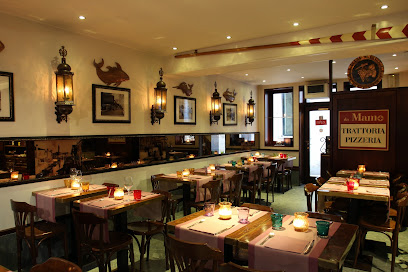
SEPA
0.1 km
Discover authentic Venetian cuisine at SEPA – where tradition meets modern deli delights in a charming setting.

Trattoria alla Madonna
0.1 km
Experience authentic Venetian cuisine at Trattoria alla Madonna—where tradition meets flavor in every bite.

Al Gobbo di Rialto
0.1 km
Experience authentic Venetian cuisine at Al Gobbo di Rialto, where traditional Italian flavors meet fresh seafood delights.

Alle Corone
0.2 km
Discover Alle Corone: A top-rated Italian restaurant in Venice offering exquisite seafood and Venetian specialties amidst stunning canal views.

Ristorante Omnibus
0.2 km
Experience authentic Italian cuisine at Ristorante Omnibus in Venice - home to delicious pizzas and traditional dishes amidst breathtaking canal views.

Osteria Al Portego
0.2 km
Experience authentic Venetian cuisine at Osteria Al Portego, where traditional flavors meet a charming atmosphere in the heart of Venice.

Ristorante San Silvestro
0.2 km
Discover authentic Italian cuisine at Ristorante San Silvestro in Venice - where tradition meets innovation in every delicious dish.
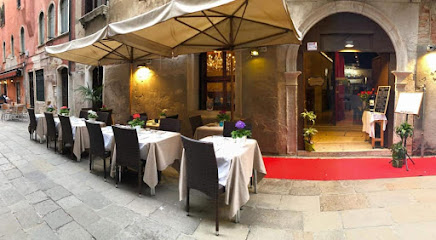
Ristorante Al Corner
0.2 km
Experience authentic Italian cuisine at Ristorante Al Corner in Venice – a culinary treasure blending tradition with local flavors.

Venice M'Art
0.2 km
Experience authentic Venetian cuisine at Venice M'Art in Cannaregio - where tradition meets modernity in every delicious bite.

Trattoria Al Gazzettino
0.2 km
Experience authentic Italian cuisine at Trattoria Al Gazzettino in Venice—where fresh seafood meets traditional recipes in a cozy setting.
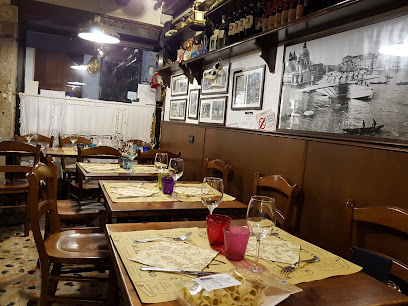
Ostaria dai Zemei
0.2 km
Experience authentic Venetian cuisine at Ostaria dai Zemei – where traditional flavors meet local charm in the heart of Venice.

Markets, malls and hidden boutiques
Eredi di Jovon Bruno
0.0 km
Discover exquisite jewelry and timeless antiques at Eredi di Jovon Bruno, a treasure shop near the iconic Ponte di Rialto in Venice.

Boscolo Gioie snc - Gioielleria, Argenteria e Vetro di Murano
0.0 km
Explore the elegance of Boscolo Gioie in Venice – where timeless jewelry meets the artistry of Murano glass.

Leon D'Oro
0.0 km
Explore Leon D'Oro, Venice's premier destination for exquisite handcrafted masks and authentic Venetian souvenirs, near the iconic Rialto Bridge.

Emilio Ceccato
0.0 km
Discover unique Venetian fashion and souvenirs at Emilio Ceccato, a charming clothing store in the heart of Venice, Italy.

Bottega Veneta T Galleria Venice Store
0.0 km
Discover the elegance of Bottega Veneta in Venice, offering exquisite fashion and leather goods in an iconic shopping destination.

free view from the terrace
0.1 km
Experience luxury shopping with breathtaking views in the heart of Venice's stunning architecture.

LA BOTTEGA DEI MASCARERI
0.1 km
Explore the enchanting world of handcrafted Venetian masks and unique gifts at La Bottega Dei Mascareri in Venice.

DFS Venice, Fondaco Dei Tedeschi (TBD)
0.1 km
Discover luxury shopping at DFS Venice, Fondaco Dei Tedeschi, featuring stunning views and a diverse selection of high-end brands in the heart of Venice.

T Fondaco dei Tedeschi by DFS
0.1 km
Discover T Fondaco dei Tedeschi by DFS, Venice's luxury shopping haven with breathtaking views and a blend of history and modernity.

Rose Douce
0.1 km
Explore Rose Douce, a unique gift shop in Venice offering handcrafted costume jewelry and exquisite glass art that reflects the city's rich cultural heritage.

Giuliana Longo - Modisteria a Venezia
0.1 km
Explore Giuliana Longo, Venice's premier hat shop, offering exquisite Italian craftsmanship and personalized service for an unforgettable shopping experience.

Alla Fiera dell' Est
0.1 km
Discover the charm of handmade seasonal goods at Alla Fiera dell' Est in Venice, a treasure trove of unique gifts and local craftsmanship.

Calzature Parutto
0.2 km
Discover unique, stylish footwear at Calzature Parutto, a delightful shoe store in the heart of Venice's Sestier San Polo district.

Frizzi E Lazzi
0.2 km
Discover unique souvenirs and local art at Frizzi E Lazzi, a charming gift shop in the heart of Venice, Italy.

Souvenir shop Venezia
0.2 km
Discover unique souvenirs and authentic Venetian treasures at the charming Souvenir Shop Venezia, where every item tells a story.

Essential bars & hidden hideouts
Bacaro Jazz
0.1 km
Experience the magic of live jazz and exquisite cocktails at Bacaro Jazz, Venice's premier bar for music lovers and culinary enthusiasts.

Devil’s Forest Pub
0.1 km
Discover the inviting atmosphere of Devil's Forest Pub in Venice, where cocktails and local brews create the perfect Italian experience.

Bar Gondola
0.1 km
Experience the heart of Venice at Bar Gondola, a lively spot for exquisite drinks and local culture.

Ai Stagneri
0.1 km
Experience the authentic charm of Venice at Ai Stagneri, a cozy bar offering local wines and delightful snacks in a welcoming atmosphere.

Barcollo Bar
0.1 km
Experience the vibrant spirit of Venice at Barcollo Bar, where tradition meets a lively atmosphere for unforgettable moments.

Bussola cocktail lab
0.2 km
Discover the artistry of mixology at Bussola Cocktail Lab, where Venetian flavors meet innovative cocktails in a vibrant bar setting.
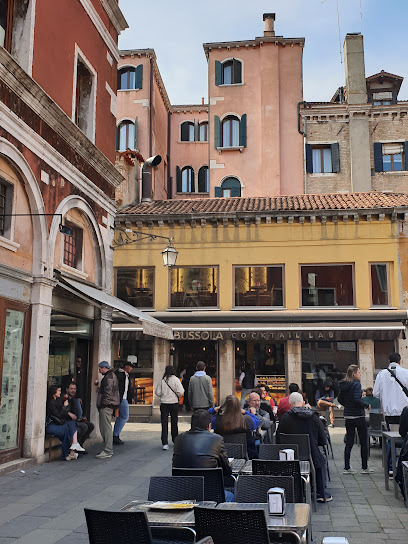
Bar All'Arco
0.2 km
Experience the essence of Venice at Bar All'Arco, where authentic cicchetti and local wines create unforgettable moments.

Cantina Do Mori
0.2 km
Discover the charm of Cantina Do Mori, Venice's historic wine bar offering exquisite wines and delicious cicchetti in an enchanting atmosphere.

Blackjack Bar
0.3 km
Discover the enchanting ambiance of Blackjack Bar, a must-visit for wine lovers in the heart of Venice.

Santa Cocktail Club - Venezia
0.3 km
Experience the enchanting nightlife of Venice at Santa Cocktail Club, where exquisite cocktails and stunning views await.

Rétro Wine Bar
0.3 km
Experience the enchanting ambiance of Rétro Wine Bar in Venice, where fine wines and cocktails meet charming retro decor.

Terrazza Panoramica Rooftop bar at Ca‘Sagredo Hotel
0.3 km
Experience breathtaking views of Venice while enjoying exquisite cocktails at the Terrazza Panoramica Rooftop Bar in Ca‘Sagredo Hotel.

Il Salotto di San Marco
0.3 km
Experience authentic Venetian flavors at Il Salotto di San Marco, where exquisite small plates and crafted cocktails await in a charming atmosphere.
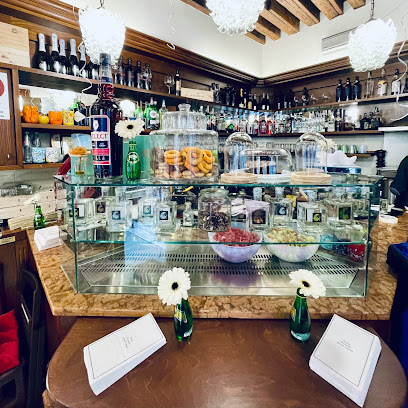
Peacock bar
0.4 km
Discover the charm of Venice at the Peacock Bar, a hidden gem offering signature cocktails and an inviting ambiance amidst the city's enchanting canals.

Bar Al Campanile
0.4 km
Experience the charm of Venice at Bar Al Campanile, where unique cocktails and warm hospitality await in the heart of the city.




